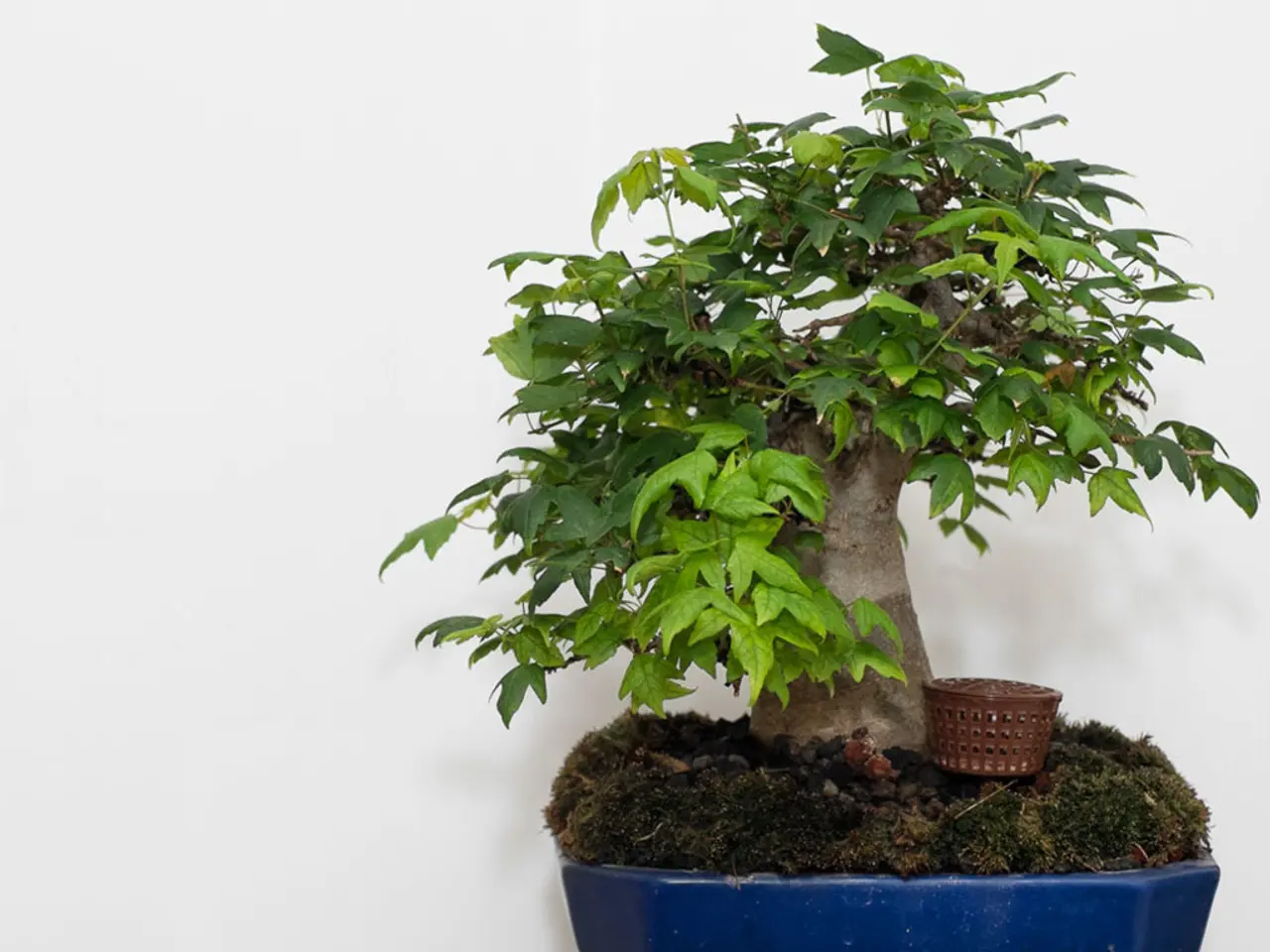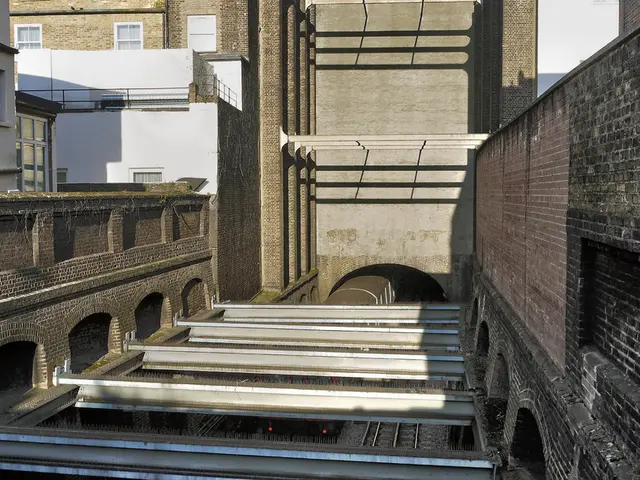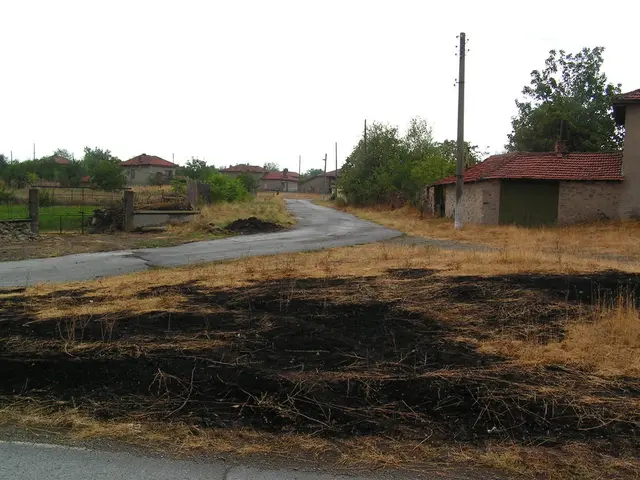Enhancing Robust Bonsai Root Development During Transplanting Processes
Bonsai enthusiasts know that the health of a bonsai tree's roots is crucial to its overall well-being. To promote healthy root growth, a carefully crafted soil mix is essential. This mix should strike a balance between water retention, drainage, and aeration, as bonsai trees are grown in small containers where soil volume is limited, and roots need both moisture and oxygen to thrive.
Key components of the ideal bonsai soil mix include:
1. Akadama: A hard, inorganic clay granule sourced from Japan, akadama retains moisture while allowing air pockets in the soil, promoting healthy root development.
2. Pumice: A volcanic rock that enhances drainage and aeration, providing large pores in the soil that encourage airflow around the roots, essential for root respiration and preventing root rot.
3. Lava rock or coarse gravel: These materials improve drainage further by preventing soil compaction and creating macropores, which facilitate oxygen flow to the roots.
4. Organic matter (pine bark or bonsai compost): Included in small amounts, organic components help retain moisture and provide nutrients. However, too much organic matter can cause excessive water retention and root rot, so it should be used sparingly.
The ideal bonsai soil mix often consists of roughly equal parts akadama, pumice, and coarse gravel or lava rock, with a small amount of organic matter to maintain moisture without compromising drainage. This mix maintains good aeration, prevents waterlogging, and encourages a fine root mass that absorbs nutrients efficiently.
Maintaining an optimal pH range of 6.0-7.0 is also crucial for perfect nutrient uptake and absorption. A well-planned ongoing watering schedule is essential for maintaining ideal moisture levels and preventing waterlogged soil. After repotting, it is essential to establish a thoughtful watering regimen to support the bonsai's recovery and promote healthy root growth.
When repotting, roots require gentle handling to prevent damage and promote healthy growth. It is not always recommended to repot a bonsai in the same pot with fresh soil, as residual salts and potential root bound conditions may persist. Repotting during winter can cause shock in bonsai trees, as they're dormant and may struggle to adapt to new soil and pot conditions. Regularly inspecting the roots during the repotting process and in the months that follow allows enthusiasts to gauge the effectiveness of their root growth strategies and make informed adjustments.
Proper root placement strategies, such as radial, central, and asymmetrical placement, promote even growth and ideal water and nutrient uptake. Incorporating organic matter like compost or worm castings enriches the soil with beneficial microorganisms, promoting a healthy root microbiome. Soil firming techniques are essential for providing stability and preventing settling or shifting that can disrupt the newly established root system.
Post-repotting care requires attention to detail, including watering, fertilization, pruning, light exposure, humidity levels, and temperature control. Prune roots carefully, removing soft, rotten, or blackened roots, and trim circling roots to encourage balanced growth. A well-draining soil mix with proper aeration is essential for preventing root rot and stagnation.
In summary, a well-aerated soil mix allows for better water penetration, reducing the risk of waterlogged soil. Choose a pot that accommodates the bonsai's root growth, preventing waterlogged soil and root bound conditions. Opt for filtered or rainwater for watering after repotting to provide a gentle, nurturing bath for the tree. Use a soil mix with perlite, vermiculite, and pine bark for healthy root growth, aeration, and drainage. With the right soil mix, care, and attention, bonsai enthusiasts can cultivate healthy, vibrant roots that support a thriving bonsai tree.
- In the realm of workplace-wellness, promoting mental-health and fitness-and-exercise routines can lead to improved overall health-and-wellness.
- For skin-care enthusiasts, therapies-and-treatments such as facials and chemical peels can help maintain healthy, glowing skin.
- A balanced diet rich in nutrition is essential for weight-management and maintaining good health.
- Medicare provides coverage for various health services and treatments, including some skin-care procedures.
- CBD products have gained popularity in the lifestyle sector, with some claiming them to alleviate stress and improve mental-health.
- Fashion-and-beauty, food-and-drink, and home-and-garden magazines often feature articles on skin-care tips, recipes, and gardening advice, respectively.
- Caring for pets entails providing them with proper nutrition, regular exercise, and mental stimulation, much like we do for ourselves.
- Traveling broadens our horizons, offering opportunities to explore different cultures, food, and surrounding environments.
- Cars are a significant part of our lives, serving as a means of transportation, symbolizing status, and providing a sense of adventure through travel.




